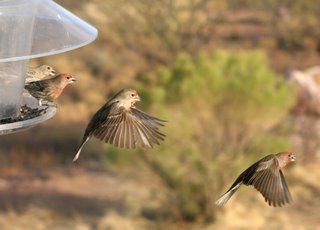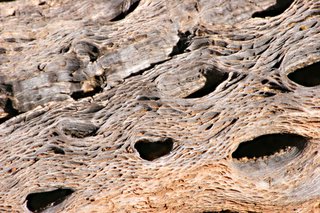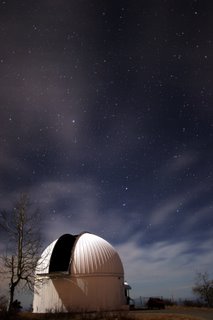
I was about ot drive out to the mailbox today when I heard a different call from bird outside. I grabbed the camera when I saw it was a woodpecker. "The Gila!" I said to myself when I saw him heading towards the Saguaro. I mindlessly snapped a number of frames of him watching me intently from his hole, ready to take wing as soon as my attention waivered.
As I was preparing this image to post, I noticed that the markings on this bird were definitely not that of a Gila, which sent me scrammbling for my Peterson's _Western Birds_.
Sure enough, there it is. My first Gilded Flicker,
I haven't felt like this since I moved from New York to Florida, new birds to be discovered daily! Canon 20D - 1/3200th, 300mm @ f/5.6, ISO 800
 Another shot I took to experiment with the macro seting on the 70 - 300mm zoom. Other than the rain we had here (but not in Tucson) several weeks ago, it has been months since the last rain. This hose bib leaks several gallons per day, and I had intended on fixing it, but since everything is so dry, it has become an important water source for birds, mammals and insects. Canon 20D - 1/160th, macro, f/20, ISO 800
Another shot I took to experiment with the macro seting on the 70 - 300mm zoom. Other than the rain we had here (but not in Tucson) several weeks ago, it has been months since the last rain. This hose bib leaks several gallons per day, and I had intended on fixing it, but since everything is so dry, it has become an important water source for birds, mammals and insects. Canon 20D - 1/160th, macro, f/20, ISO 800

































